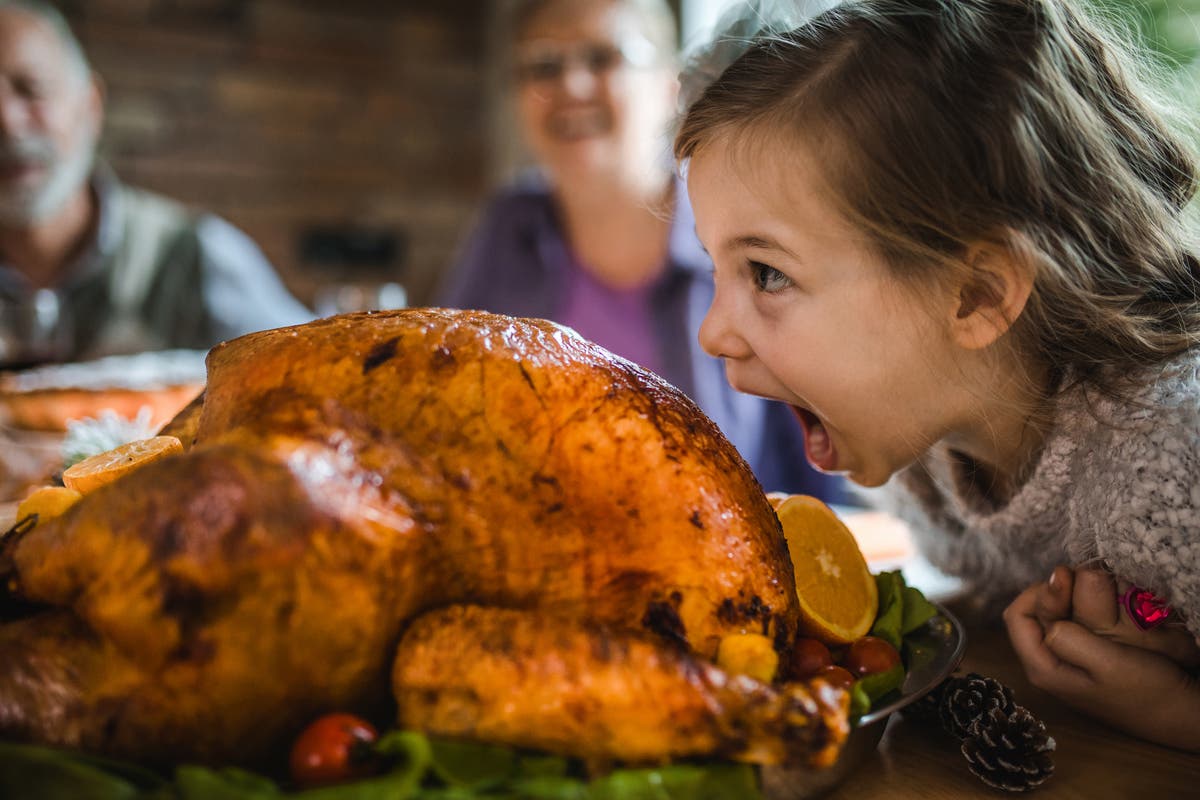
Some of Americans’ favorite Thanksgiving dishes could become scarcer in the coming years thanks to the climate crisis. Many families celebrate the fall holiday with comforting dishes like turkey with side dishes of mashed potatoes, cranberry sauce, corn bread, and pumpkin pie for dessert . But, as temperatures rise and droughts become more widespread and severe , agricultural production is expected to take a major blow — and that could impact dinner tables across the country, as some foods become more expensive or harder to find.
It’s already happening around the world. This year’s holidays face a global shortage of cocoa beans thanks to drought and other extreme weather. In 2021, NASA researchers said they expected climate change to have an adverse impact on essential crops like corn and wheat within a decade.

“Climate change is upending the growing conditions that crops and livestock prefer, and some of our favorite Thanksgiving foods like cranberries are at risk of yield declines or supply disruptions,” said Britt Groosman , of the Environmental Defense Fund. “We can overcome this threat by investing in more resilient crops, livestock and farming practices. Ensuring farmers and ranchers can sustainably grow food on a changing planet is the key to maintaining abundant, safe and affordable food during the holidays and all year long.
” Climate change could inflate prices of in-demand products, and it’s already damaged various crops around the world, leading to billions of dollars in losses . In March , a study from the European Central Bank and the Potsdam Institute for Climate Impact Research found that rising temperatures could add as much as 1.2 percentage points to annual global inflation by 2035.
Climate change is also impacting critical pollinators, like bees . One in three bites of the food people eat depends on pollinators and, globally, nearly 80 percent of crop plants used to make food and other plant-based products require pollination by animals. To make things worse, Earth’s freshwater sources — 70 percent of which are used for agriculture — have been depleting over the past decade.
Some crops, including ones that often appear on Thanksgiving tables, are more susceptible than others. Maize crops, for example, are projected to decline by 24 percent as soon as 2030 with “severe implications” if planet-warming greenhouse gas emissions continue to skyrocket. The U.
S. is the world’s largest corn producer , and corn farmers generated $73.9 billion worth of corn bushels last year.
It’s not only a popular Thanksgiving side dish, but also makes up the majority of turkeys’ diet . Now, experts are worried about how declining corn crops will impact turkey populations, which also face a heightened threat of disease in a warmer climate. It’s not just turkeys.
Potato production is threatened by increases in temperatures, because they need around two inches of water each week from rain or irrigation. Lower temperatures generally support stable crop yields, scientists say. Hot and dry weather in the Pacific Northwest has already made it harder for farmers to grow potatoes used for french fries .
Cranberries used for cranberry sauce are also sensitive to temperatures. They require a timespan during the winter when the ambient temperature falls below 45 degrees Fahrenheit for normal blossoming. Want a slice of pumpkin pie? A warmer climate is bring more extreme and frequent weather events that can damage pumpkin crops.
Extreme heat can cause the plants to wilt, while extreme wet conditions can lead to nutrient deficiencies and increase the chance of mildew. Below-freezing temperatures can also kill pumpkins . Some Thanksgiving staples, like green beans, may be more resilient because they need less water to grow.
Scientists have used green bean plants to develop new “climate proof” crops , studying how they adapt to climate conditions and exposing them to radiation to speed up the natural breeding process. “Climate change is forcing food producers and farmers to change how they approach agriculture,” María Caridad González Cepero, a scientist at the National Institute of Agricultural Science in Cuba, said. “New plant varieties, such as these ‘climate proof’ rice and bean plants, offer a sustainable option for adapting to some of the negative effects of climate change, which is important for ensuring food security today and in the future.
” Unfortunately, with greenhouse gases at their highest levels last year and temperatures breaking records around the globe, these concerns have only grown — and will continue for years to come..














